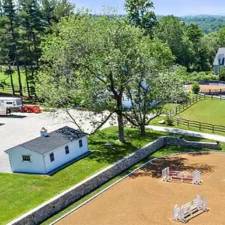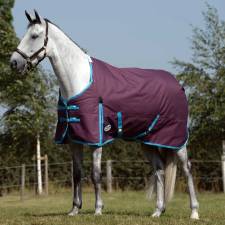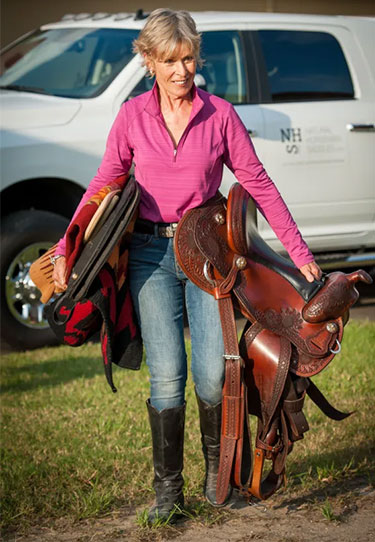
By Nick Pernokas
The third grader sat on her Grannie’s daybed, reading. Her grandmother’s cottage was in Old Saybrook, Connecticut, and the open window allowed in the ocean air and the sounds from an osprey nest in the tree outside. It was a Saturday and the girl and her sisters had just returned from Grannie’s weekly summer pilgrimage to the library. Now Letitia was engrossed in a world created by Walter Farley, in a book titled The Black Stallion.
“I remember thinking that I had to have horses in my life,” says Letitia Glenn, founding owner and saddle systems designer for Natural Horseman Saddles, as well as the newly christened company, Contour Saddlery.
Unfortunately, it would be many years before Letitia’s dream came true. At the age of 47, Letitia and her husband, Art Glenn, had become successful entrepreneurs. They had homes in Houston, and in Durango, Colorado. The Rocky Mountains called to them and they enjoyed the outdoor activities there, like skiing and back packing. Around 1990, they moved to Durango full time and purchased the O’Farrell Hat Company. Letitia felt that the time was right for a horse.
“I said, ‘Art, if I don’t have a horse before I die, I’m going to die!’” remembers Letitia.
Letitia had friends who were Paso Fino breeders and they gave her a well-bred two-year-old stallion. Her friends told her not to ride him until he was four. A corral was built in the backyard and Letitia began doing the groundwork on the colt. Within a year, Art became interested in horses as well and he purchased another Paso Fino for himself. When they were able to start riding the horses, the couple took them to a well-known saddletree maker to have their backs measured for custom trees.
Through Letitia’s involvement with the O’Farrell Hat Co., she met famed horse trainer Pat Parelli over the phone. Pat had called to order a custom beaver hat.
“He was absolutely lovely and didn’t request a discount, which impressed me.”
The Glenns, and hatmaker Kevin O’Farrell, soon took their hats to Germany for the Equitana trade show. Pat and Linda Parelli were also there conducting some horsemanship clinics. The couples became friends and eventually the Parellis stayed with the Glenns in Durango, while they searched for land in the area to build their first equine learning center. Letitia designed a logo for them and began to create custom clothing for the Parellis’ customers and fans. In 2000, Linda Parelli made a comment to Letitia that would alter her life.
“Linda said that saddles are all too often torture devices. “
Letitia thought to herself, “Luckily ours aren’t, because they were measured and built to fit our horses”.
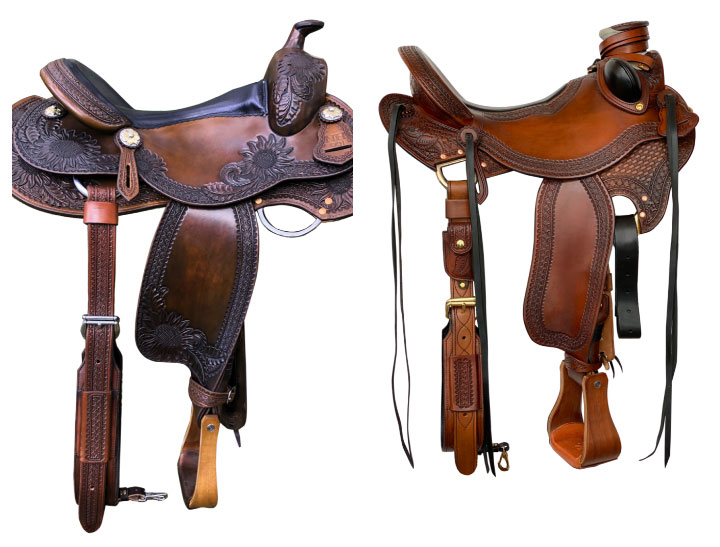
“Then I started to notice that my horse obviously wasn’t traveling underneath his saddle the way that he could when he was naked. I really hadn’t thought of looking at saddles from a horse’s point of view.”
Letitia became fascinated with the issue and began to compare notes with Linda Parelli. They observed students who seemed to be having trouble progressing with their riding because their saddles seemed to get in the way of the horse’s movement, as well as the rider’s balance. Letitia began to gather different makes of saddles to see what worked the best on the wide variety of breeds and for the many riders who came to learn from the Parellis.
“What we realized is that the moment you impinge that shoulder, you set up biomechanical issues in the rest of the horse. That translates into a way of going that can deteriorate their physical structure over time, let alone the mental and emotional things you deal with.”
Letitia felt that uncomfortable saddle equipment could lead to unstable horses that were more dangerous on the trail, spookier and just not happy. Natural Horseman Saddles was founded in 2001, and through trial-and-error Letitia and Linda worked on solving this problem. They worked with some good traditional saddlemakers to try and get one prototype that would be broader, flatter and would be western looking. It would need to have the good properties of weight distribution, as the best western saddles did, but it would also have to have a shape that would promote flexion and collection the way English saddles do.
Eight prototype saddles were created over three and a half years. When success was achieved, the saddle was named the Fusion, for this combination of assets.
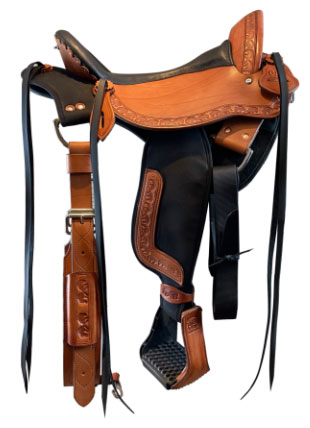
“I got really good at looking at a horse and telling what was going on. Horses were our teachers. They don’t care what saddle we ride, unless it traps or hurts them, and sometimes they let us know in subtle ways.”
The theories that created the Fusion went way beyond pressure mapping, although that was one of the techniques they used. Letitia says that the proof is hard to assign a number to and is qualified more by the horse’s expression, carriage and what his body looks like when you take the saddle off.
The debut of the Fusion, in 2003, was at an annual Parelli ranch event with a huge crowd. One of the instructors had a mare that was difficult and Linda thought that the saddle could be to blame. She resaddled the horse with the Fusion and the change was instantaneous.
“That mare immediately dropped her head, licked her lips and was not a problem from that point forward.”
The crowd of 2500 came down out of the bleachers, many wanting to know how they could get a saddle like that. Names were taken, but unfortunately there weren’t any others in production yet.
“We were still searching for a manufacturer willing to craft in unconventional ways. Our research had proven traditional measuring and building techniques did not earn the horses’ approval.”
By 2004, the Glenns had found a company in Greenville, Texas, that could handle the production of the saddle for them. The saddletree was an all wooden one and the only problem they had was applying strict quality control to that volume of saddletrees. Letitia learned a lot from master saddlemakers during this process about saddle construction. Different types of riggings and rigging positions were tried along the way. An English saddle version soon followed and they were built in England. Finally, a hybrid saddle was created on a western tree with English leathers, stirrups and double billets for a two-buckle girth.
The Glenns had sold a couple of thousand saddles when they were approached by some saddlemakers from Germany. The Germans had been working with tree maker Ed Steele to develop a new elastomer compound, which could be used to mold a flexible one-piece bar and ground seat foundation. The wooden fork and cantle would add stability and keep the material from splaying out. They thought that the Fusion’s design would work well with their product.
One of the Germans was a business man who owned Pullman Saddlery and had 1300 retail dealer outlets in Europe. The other was saddlemaker Stefan Luchman who had studied with some great saddlemakers in Germany and often collaborated with Wolfgang Fey. They thought that Pullman would be able to handle the construction of this unique saddle.
“Stefan was really their master saddler. He was a lovely, quality-oriented craftsman who was eager to discuss ideas with me. We made many trips to Germany.”
A deal was made and two unsuccessful attempts were made to duplicate the proper shape. The third time was a charm. The third prototype saddle arrived in 2006. Pat Parelli put it on his famous horse, Magic, and began to ride her across a large field.
“He began whooping, hollering and saying, ‘I have never felt anything like this,’” remembers Letitia.
The flexibility and generous foundation shape gave the mare’s body room to move. The new saddle was named the Natural Performer. The skirts, with in-skirt riggings, were manufactured like envelopes to encase the flexible bars. The bottom of the skirts could be covered with sheepskin, suede-covered memory foam or felt. The tree was designed to be a little wider and flatter than a conventional full Quarter Horse saddletree. Horse owners were hungry for this new flexible saddle and thousands were sold. In 2008, the decline in the world economy adversely affected the German partners and the Glenns hustled to find some new makers in the United States to supplement them.
In the early 2000s, while Letitia was working on developing the prototype saddle, she also searched for a quicker fix for the saddle fit problem. This would even help owners who might not be ready to buy a new saddle. She ended up designing an interface system to help saddles offer more room for shoulder movement. The first system incorporated auto-filling air bladders with baffled foam to cushion, protect and auto-adjust to asymmetry as the horse traveled. Adding shims made of medical felt customized the “Air Pads” further. But, felt can’t be tapered and Letitia knew this was an important feature to enable comfortable fit transitions along the horse’s body. Today, her breakthrough customizers are tapered foam shims in three shapes, to use in combinations allowing gross or micro adjustments. Another contouring pad was added with left and right “Smart Foam” cores that could also be used with shims.
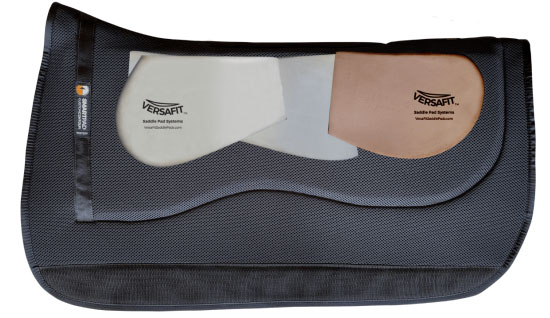
“I’m really proud of it. It’s your first link to your horse’s body. I designed a free, saddle fit evaluation system that we offer on our website. Our conversion rate when people do that and then take a saddle for a test ride is 98 percent. It can help them understand where to put a shim to make sure that the shoulder is relieved and that the saddle is balanced. When they do that, the horse will travel magnificently. Even if you don’t have an excellent saddle, you can make your saddle much better with the interface system.”
Lighter-weight versions of the flexible saddles for trail riders were developed by using wax wear cloth for skirts and fenders.
Around 2015, Stefan Luchman was found dead at the bottom of the staircase to his studio. In 2019, Art Glenn passed away.
Famed all-around rodeo cowboy Ty Murray is also a horseman outside the arena. He is a fan of the Letitia’s products. Letitia recounts a conversation with Ty, where he asked her why everybody didn’t know about her products. She replied that it took a little patience and that a lot of cowboys just want to get on and ride.
“Ty said, ‘That’s easy for them to say. They’re not the ones that are hurting.’”
Today, the many individual styles of western saddles are built in the Southwestern United States by various saddlemakers. Their English saddles are handcrafted in Walsall, England. Their family of brands includes Natural Horseman Saddles, Parelli Saddles and Glenn Saddles. They are now all sold under the new umbrella name of Contour Saddlery. The interface system is marketed under the name Versa Fit. All of Contour Saddlery’s western and hybrid saddles are made on the same tree foundation. Two different widths and angles are used, which they call their standard and their super-wide fit. Contour Saddlery just changes the forks and cantles to fit the individual sport’s model style.
“Between the two basic foundations and our interface system, we can fit every breed imaginable, except small ponies. I have lots of stories of people being amazed because they’ve never been able to find saddles to fit before. People cry. It’s quite moving. This is my mission and my passion.”
Letitia lives in Ocala, Florida, with one of her horses. Gretchen Furlong runs the main Contour Saddlery outlet, Saddles & Co., in Ennis, Montana. Gretchen is herself a horsewoman, and a saddle designer, and now works directly with the saddlemakers.
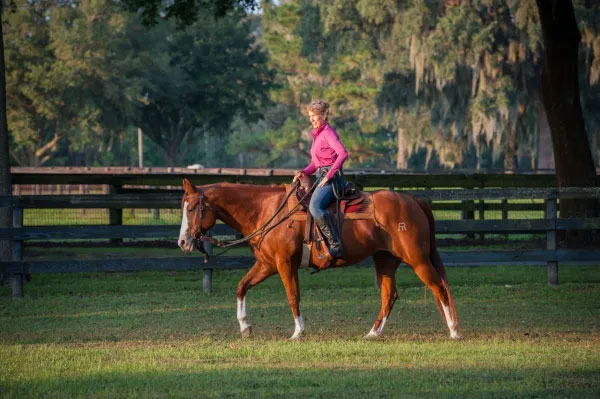
Letitia is a board member of The Ocala Horse Alliance. In addition to promoting the local horse industry, the Alliance makes sure that every fourth-grade child in the local school district receives a copy of Walter Farley’s, The Black Stallion as part of a reading incentive program. Killing two birds with one stone, the organization hopes to stimulate interest in horses in another generation of future riders. You can see Letitia’s hand in this. By supporting this program, Letitia is bringing things full circle for the next little girl who is reading, and dreaming, on her summer vacation.
To find out more about Contour Saddlery’s products, go to naturalhorsemansaddles.com or contact hello@contoursaddlery.com , saddles@naturalhorsemansaddles.com.
Saddles & Co.
111 E Main Street
Ennis, MT 59729
This article originally appeared in Shop Talk Magazine and is published here with permission.
You can find more entertaining articles in our section on Recreation & Lifestyle.










